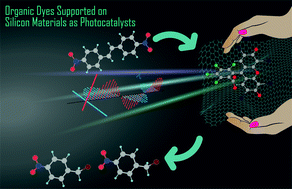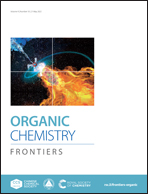Organic dyes supported on silicon-based materials: synthesis and applications as photocatalysts
Abstract
The most important advance in photocatalysis in the last decade has been the synthesis and application of organic compounds to promote this process. Organic dyes have shown ecological and economic advantages over organometallic compounds and have been proved to generate reactive oxygen species based on their photochemical properties. Organic compounds on support materials form a heterogeneous system that can potentiate photocatalysis within the context of green chemistry. In many cases, the easier separation of reaction products allows for the reuse of the catalyst, thus potentially lowering costs in large-scale processes. The best-known porous supports are silicon-based materials, which possess suitable properties for photocatalysis: highly specific surface areas, large pore volume, easy modification of surfaces with various organic groups, excellent thermal stability, and chemical stability in almost all solvents utilized as catalyst supports. Hence, the current review focuses on metal-free photocatalysts, particularly organic dyes, supported on silicon-based materials.

- This article is part of the themed collection: 2022 Organic Chemistry Frontiers Review-type Articles


 Please wait while we load your content...
Please wait while we load your content...